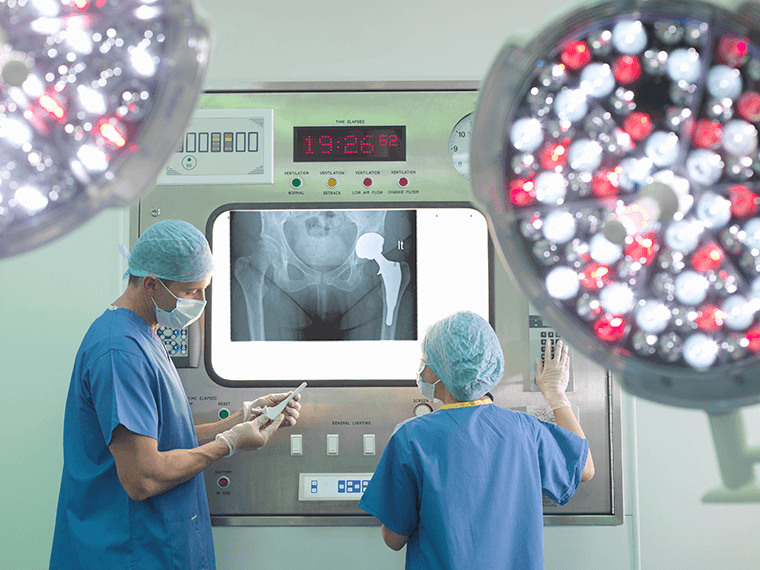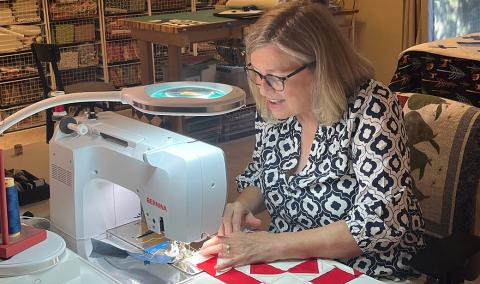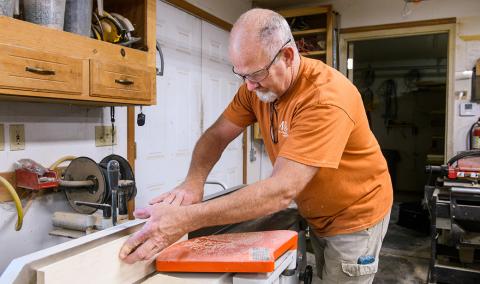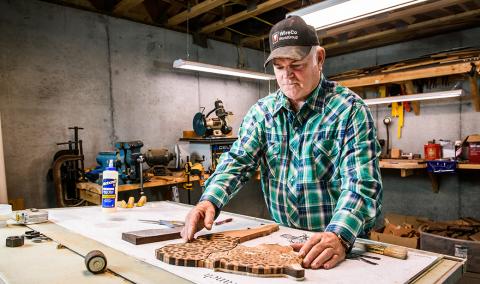Hip replacement surgery is a procedure in which your hip joint is replaced by a prosthetic joint. Joint replacement can greatly improve your quality of life but requires careful planning and attention to detail to make sure the new joint is able to meet your expectations and daily life.

At MU Health Care, you can expect detailed, high-quality care from experts to help you find joy in your daily activities and hobbies. We’ll take the time to get to know you and match your diagnosis and individual goals with a personalized treatment plan. We’ll make the process as simple as possible for you, coordinating all of your appointments, surgery, follow-up care and physical therapy so that you are back on your feet with as little stress and pain as possible.
When to Consider Hip Replacement Surgery?
The most common reason for hip replacement surgery is arthritis, a wearing down of the natural shock absorbing cartilage surrounding the joint. A hip replacement can also help you regain function and pain-free movement after injuries or fractures that damage the hip.
For most people, a hip replacement is an elective procedure done when the damage to their hip joint is too painful for daily activity or prevents them from standing, getting out of bed or dressing without assistance.
If you have been diagnosed with severe degenerative arthritis in your hip and have tried nonsurgical hip pain treatments, a hip replacement might be right for you. You can also take our free hip assessment to learn more about hip replacement surgery.
Types of Hip Replacement Procedures
There are a few ways to replace a hip, and at the beginning of your hip replacement journey we will go over all of your options, including whether a hip replacement is right for you. Your medical history, diagnostic imaging and in-person visit will help you and your care team decide the best option for you.
Partial Hip Replacement
A partial hip replacement is a surgery for patients who have damage to the ball of the hip joint, but a healthy socket. During a partial hip replacement, the surgeon removes the circular piece of bone at the top of your thigh bone, or femur. Called the femoral head, this piece of bone is an oval about the size of a golf ball.
After it’s removed, your surgeon implants a metal ball in its place, secured with a metal rod in your femur. Your hip socket is given a special lining that allows the metal ball to move without causing pain or discomfort.
Total Hip Replacement
A total hip replacement is a surgery for patients who have damage to the ball and socket of the hip joint. In a total hip replacement, your surgeon removes your femoral head and smooths out the socket, then implants an artificial joint made of metal, sometimes ceramic, and plastic pieces.
Robot-Assisted Total Hip Replacement
A robot-assisted total hip replacement is an option for some patients. Using a robotic system, your care team create a complete picture of your anatomy and the new joint by using 3D computed tomography (CT) imaging. During your joint replacement, this innovative technology helps your surgeon personalize your joint replacement procedure.
Surgical Approaches
A surgical approach is another way for your surgeon to describe how they will get to your hip joint in order to replace it. Our surgeons offer several approaches and may recommend one based on your unique anatomy and goals.
There are three general approach options for hip replacement, each of which can be successfully used to replace all or part of your hip joint. Similar to the type of joint replacement, your hip care team will go over each option with you and help you decide.
- Direct anterior (front) approach: During this minimally invasive procedure your surgeon avoids the tendons and ligaments that support your hip joint. Because your surgeon is accessing the joint between muscle fibers, your recovery may be faster during the first several months after surgery. Some patients have a faster recovery for the first six months after surgery. This approach is not widely available and may not be right for some patients.
- Direct posterior (back) approach: Approaching hip replacement surgery from the back of the hip although the incision is on the side of your hip. Many patients are also good candidates for this surgery, and it has been the standard approach to hip replacement for many years.
Hip Replacement Recovery Times
Recovery time varies from one patient to another. Before surgery, your hip replacement team will have planned your procedure and can help you understand what to expect. Hip replacement patients can expect to stand and be mobile the same day of their surgery. The average hospital stay is one or two days.
Outpatient Hip Replacement
MU Health Care offers an outpatient joint replacement procedure for those who qualify. During an outpatient replacement procedure, your surgery will either take place early in the morning and after one session of inpatient physical therapy you can be discharged. Or your surgery will take place later in the day, then you’ll work with inpatient physical therapy, stay overnight and go home less than 23 hours after surgery.
Before you are discharged, your care team will discuss your physical therapy plan with you. If you are doing well with your exercises given during your hospital stay, you may not have to do outpatient physical therapy. This will be re-evaluated at your follow-up visit. Some patients due start outpatient physical therapy within the first one to two weeks after surgery. We will also plan a follow-up clinic visit to check on your progress three to six weeks after your surgery.
Learn More About Hip Replacement Surgery
Related Conditions & Treatments
- Chiropractic Care
- DEXA (DXA) Scan
- Elbow Pain and Injuries
- Foot and Ankle Pain
- Bone Health Program
- Hand and Wrist Pain
- Hip Pain
- Joint Health Program
- Knee Pain
- Limb Preservation Center
- Orthopaedic Oncology
- Orthopaedic Rehabilitation
- Orthopaedic Trauma
- Pediatric Orthopaedics
- Physical Therapy
- Regenerative Orthopaedics
- Sarcomas
- Shoulder Pain and Injuries
- Sports Medicine




























